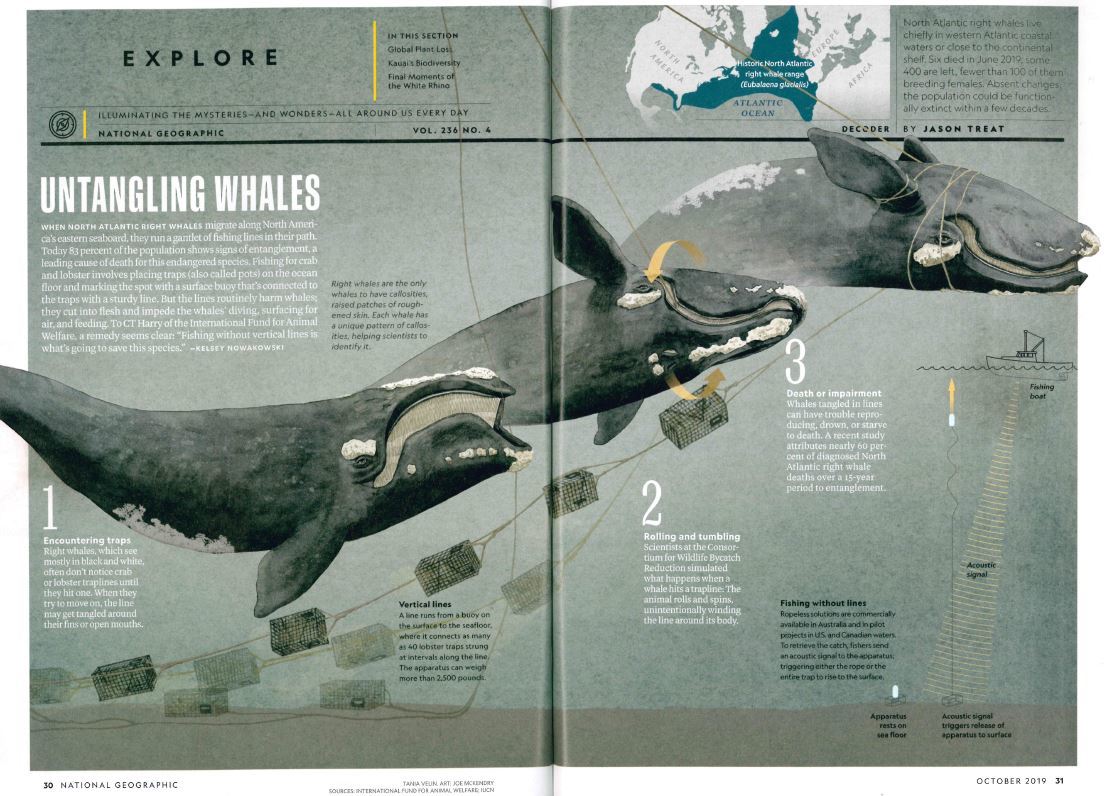Saving the North Atlantic right whale - North America
Don't fail our whaleNatGeo and ifaw collaborate on key right whale entanglement visual
NatGeo and ifaw collaborate on key right whale entanglement visual

A collaborative effort between National Geographic and IFAW begun earlier this year culminated in the release of a two-page pictographic in the October Issue of National Geographic Magazine in an edition entitled Last of Its Kind. Featuring species at the precipice of extinction, where population numbers are desperately low, time is critical, and efforts to save them go beyond the parameters of traditional conservation, the North Atlantic right whale fully embodies the essence of the issue’s focus. In support of the old adage ‘A picture is worth a thousand words,’ IFAW Marine Campaigner CT Harry worked with the National Geographic design team to produce a robust visual illustration depicting how North Atlantic right whales become physically entangled in commercial fishing gear. Once numbering in the hundreds of thousands, the population has dwindled down to around 400 individuals, decimated by unintentional ship strikes and chronic entanglements in fishing gear along the eastern seaboard.
According to research, approximately 83% of right whales have experienced entanglement at least once in their lifetime, while entanglement-related deaths have accounted for 85% of diagnosed mortalities since 2010. The process of entanglement itself causes immediate, traumatic drowning events in some cases and prolonged, painful deaths in others as a result of constrictive wraps of line. Wrapping around the whale’s flippers, tail, head, or mouth, entangling line produces effects of deep lacerations and even partial amputations of the flippers, often leading to emaciation resulting from an inability to feed properly.
The illustration produced by National Geographic in conjunction with IFAW offers vivid detail of how the fate of this species is literally raveling. Through initially encountering traps, to the whale engaging in instinctual rolling and tumbling, to ultimately leading to either death or permanent impairment of the animal. We invite those to take a look at the illustration and read the accompanying online piece entitled This common fishing practice endangers an entire whale species. This will better serve to understand the plight of these animals and serve as an introduction to the concept of ropeless fishing, in essence, fishing without vertical lines. For in the words of IFAW’s CT Harry, "Fishing without vertical lines is what’s going to save this species."
Related content
Our work can’t get done without you. Please give what you can to help animals thrive.